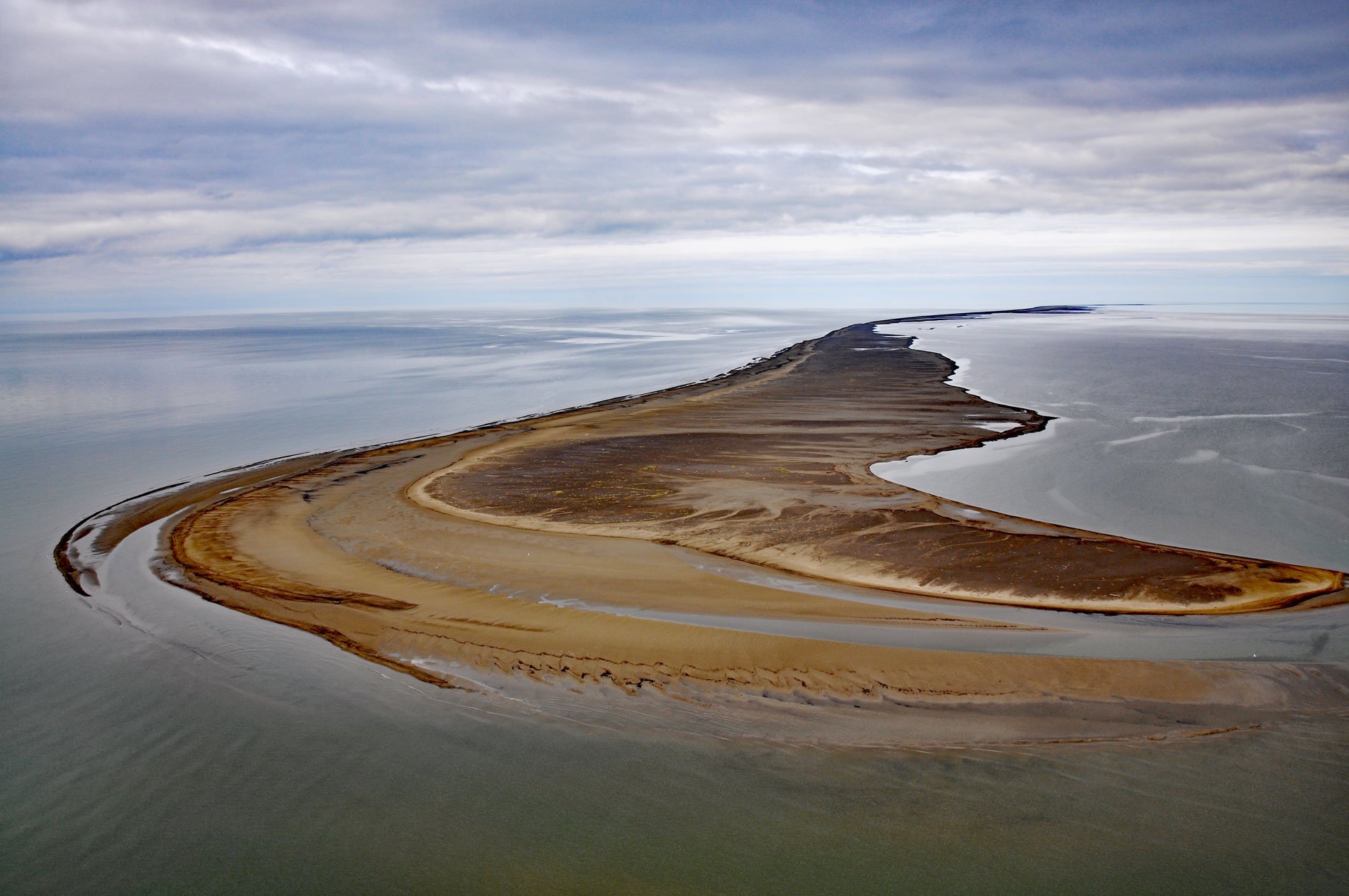Solivik Island is an Arctic barrier island that extends southwest for 16.5 miles (27 km) from Icy Cape Pass in the north to Utukok Pass in the south and forms the northern portion of Kasegaluk Lagoon, about 69 miles (111 km) southwest of Wainwright and 28 miles (45 km) north-northeast of Point Lay, Alaska. The Iñupiat name for the island means ‘a sewing place’ and was first reported in 1956 by cartographer Thomas E. Taylor of the U.S. Geological Survey. Utukok Pass is a water passage navigable by small boats between the Chukchi Sea and Kasegaluk Lagoon. The pass is named after the adjacent Utukok River and in the Iñupiaq language means ‘old’ or ”ancient’. The river name was first reported by Lieutenant Lavrenty Zagoskin when he referred to the Utukakmiut people who lived along the river. Kasegaluk Lagoon is formed by a series of barrier islands that developed between the Chukchi Sea to the west and the mainland coast to the east. The lagoon is ice-covered for about 7 months, from early November through late May or early June. The Chukchi Sea freezes in late November, and historically pack ice may remain in the Icy Cape area until early July.
Arctic barrier islands are elongated accumulations of sand parallel to shore that in the Arctic are constructed mostly by waves rather than wind-driven ice shoving. In some locations, they are isolated and separated from the mainland by lagoons depending on the hydrodynamic regime and sediment transport processes of the area. Solivik Island is a relatively recent deposit of sediment with the location, shape, and geomorphology controlled by the amount and type of sediment and the stability of wave energy and sea level. Along Alaska’s Arctic coast, these types of barrier islands are low (less than 2 m high), narrow (50- 200 m wide), and long. The length is broken occasionally by narrow inlets or ‘passes’ that provide the connection between the lagoons and the ocean. These islands are susceptible to coastal erosion since sediment is deposited by ice and eroded by waves, so shorter periods of an ice-covered ocean will result in longer periods of wave erosion.
Over one-third of the Chukchi coastline is protected by a chain of narrow barrier islands. Along with their associated lagoons, this ecosystem is vital to the birds, mammals, and fish in the region; however, they are under threat from rising seas, loss of sea ice, and increased storm surges. The erosion, or periodic inundation of barrier islands, in addition to the presence of new predators moving north in concert with a changing climate, creates new risks for many of the animals that live and breed along this coast. For example, Pacific common eiders breed on many barrier islands in the Chukchi Sea and are an important subsistence species contributing to food security for several coastal communities. They have also been recognized as a species of concern because of population declines and threats from climate change and habitat disturbance. Common eiders are now the highest-risk waterbird population on Alaska’s Arctic coast, largely due to potential overwash and erosion of their nesting habitat. Read more here and here. Explore more of Solivik Island and Utukok Pass here:

